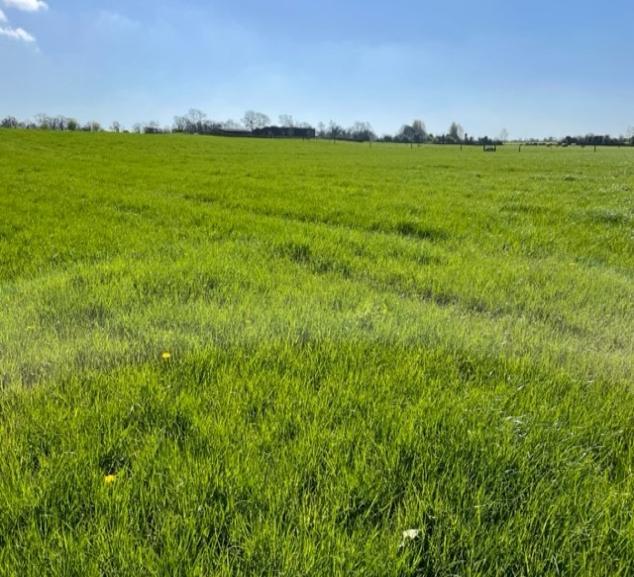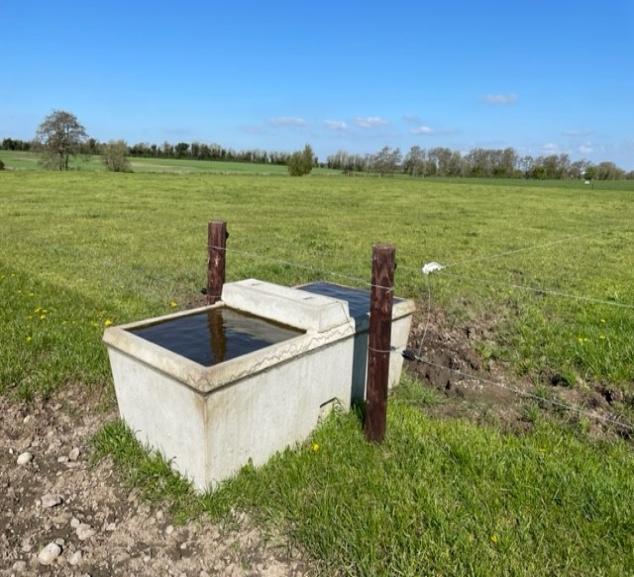Grassland
- Controlling docks – always on the agenda!
- Keep control on grass – maintaining a leafy sward
- Management of clover swards
Having previously been a stud farm , a part of Michael’s five year plan was to improve the grassland and to focus on better grass utilisation. The farm was divided with permanent electric fences and water troughs added throughout the farm. With very little ryegrass in the sward , he no choice but to start a reseeding programme. This is an easier way to eliminate all the weeds and docks than controlling them in existing swards.
Before any reseed , Michael sprays off the poor quality sward with a glyphosate herbicide which kills all surface weeds and scutch grass. After 2 weeks, the ground is tilled and sown. After another 5 to 6 weeks , Michael will always follow up with a post emergence spray. Docks and other weeds can survive in a new ley and therefore need to be sprayed. Michael believes that the post emergence spray is the most important application of a herbicide in the lifetime of a grassland sward.
Reseeding is a costly investment so it is crucial that everything is done to give the new reseed the best chance to establish successfully. Controlling weeds with a post emergence spray that is clover safe, gives the greatest opportunity for creating a clean, weed – free sward that will be productive for the long term.
When to use the post emergence spray?
When the seedling docks is the size of a €2 coin in the new pasture . This takes 5-6 weeks after sowing. Spraying too early could mean that the weed seeds have not germinated and too late the dock root will have had time to develop. As Michael is focusing on incorporating clover into the farm – he will always use a clover safe spray. There are a number of other considerations also to ensure success;
Existing Grassland
Even though most of the docks and weeds are now under control , there is always outbreaks which can now be spot sprayed without having to spray the entire field. Michael has started incorporating clover by oversowing in the last year. In the year, prior to oversowing , he will ensure that the paddock or field in completely weed free as sourcing a clover safe spray is increasing becoming a challenge.
Also keeping a thick, dense and leafy sward will reduce or even eliminate docks as grass will out-compete the docks for space, light and nutrients.

Image 1: Silage closed since April 4th
Keeping control of grass- maintain a leafy sward in May
Michael’s objective during the main grazing season (May to August) is to achieve high daily live weight gains from a grass-only diet. High animal performance will be achieved by maintaining a consistent grass supply for the herd and monitoring farm grass cover every 5 days. This will allow decisions to be made to alter grass supply early; for example, adjusting stocking rates or removing surplus grass.
The key grassland management guidelines for this period are;
Michael aims to grow 14ton DM/ha of grass this year while reducing his chemical nitrogen by 10% through better use of clover. He has also added to the existing farm infrastructure by increasing the number of water troughs. All fields can be further sub-divided with pigtails and reels.

Managing Clover swards
In 2022 , Michael selected paddocks which had excellent soil fertility, a pH of 6.7 and that were weed free for the oversowing of clover. Clover can provide nitrogen for grass growth as well as having a positive effect on livestock performance . Grassland management needs to be top-class and Michael is very careful in managing these pastures ;